1813 Dump, a textbook example of the nation's very first coin
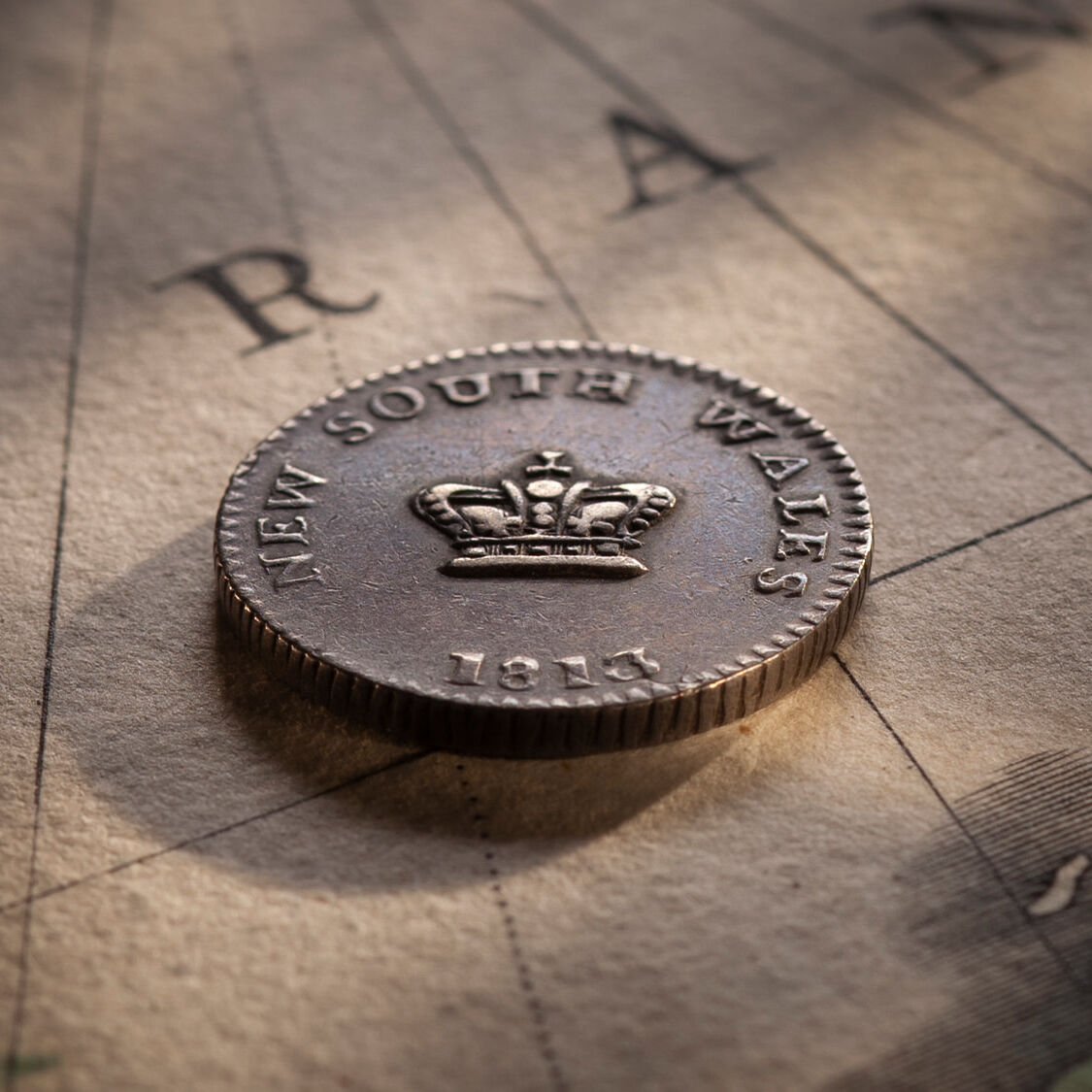
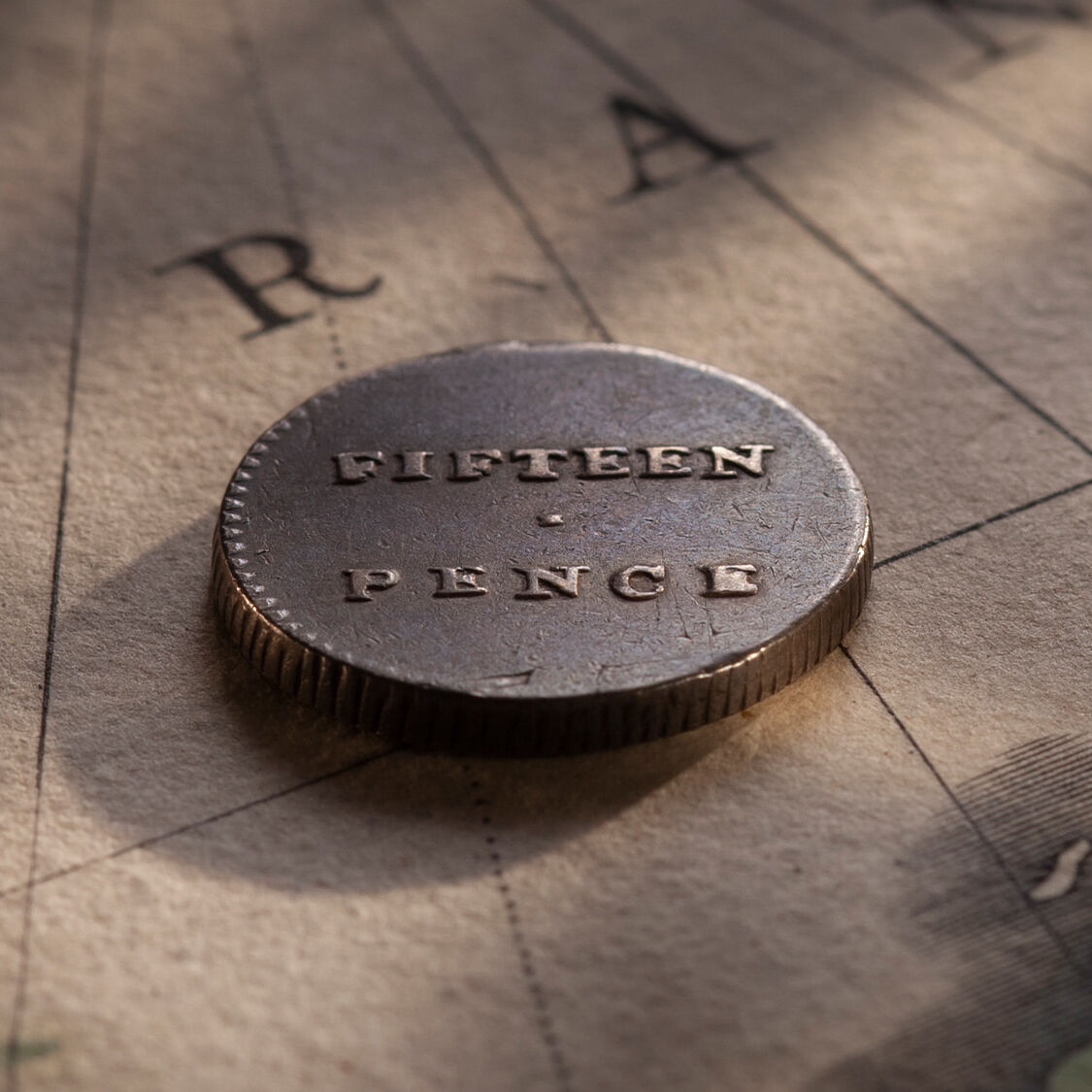
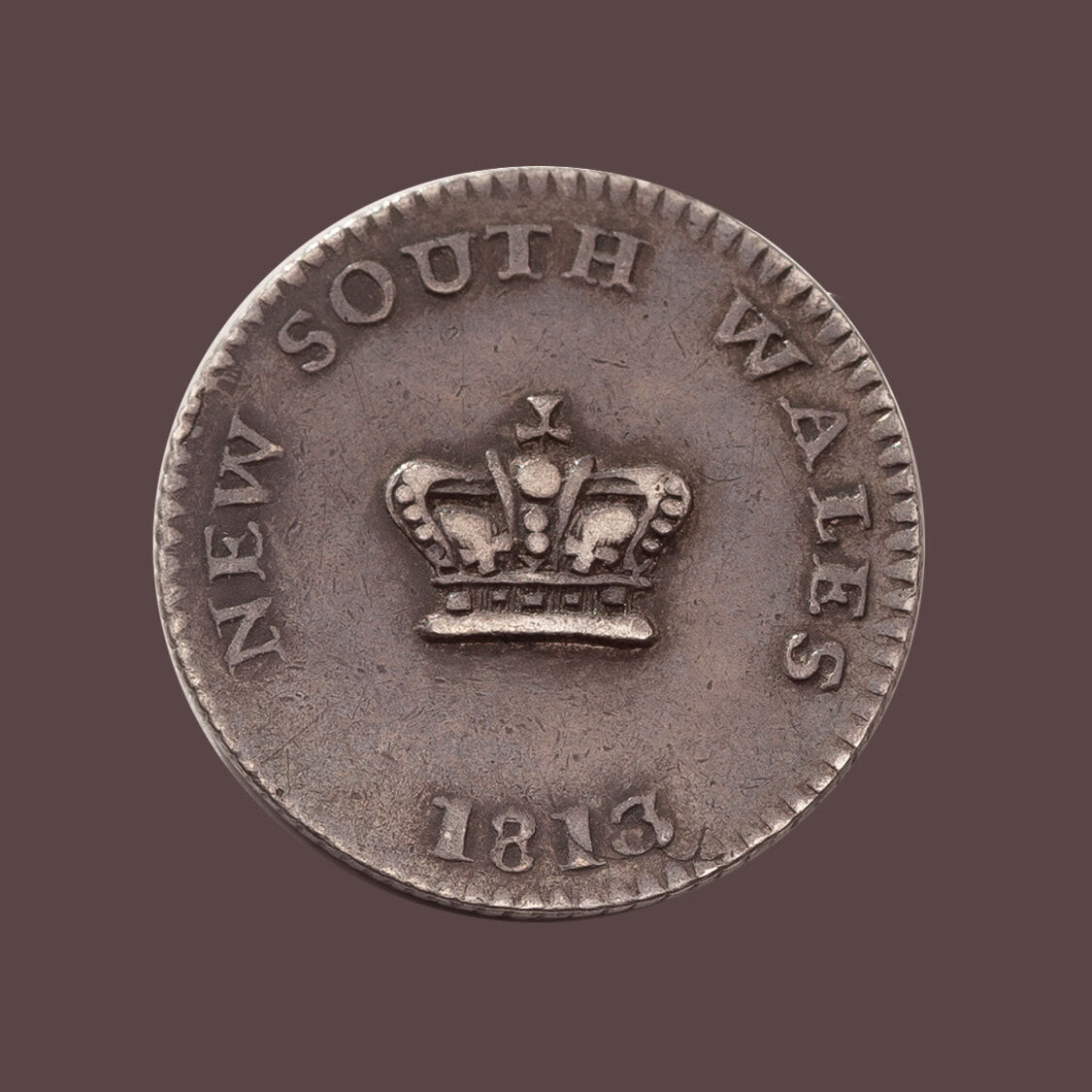
This is a classic Type A/1 Dump with the design beautifully centred. At Good Very Fine, the design features of the fleur de lis and pearls in the crown are crisp and have not melded into the coin. The legend and date '1813' are strongly three-dimensional .

Two extremely important elements are shown on the reverse of this Dump, elements that are not always present in every example. The 'H' for Henshall between the words 'FIFTEEN' and 'PENCE'. And the design detail from the original Spanish Dollar from which it was created, shown below the word 'PENCE'.
This is a text-book example of the 1813 Dump.
1. High quality, in the top eight per cent
The 1813 Dump circulated widely in the colony, the extreme wear on most Dumps evidence of its extensive use. The average quality Dump is graded at Fine to Good Fine, with this coin four to five grades higher at Good Very Fine / About Extremely Fine. We rate it in the top eight per cent of surviving examples. The coin has obviously been cherished for it has been brilliantly preserved with beautiful toning and highly reflective fields.
2. A coin to enjoy and show around
Struck with the A/1 dies, the crown is classically well-centred. The design details are chunky, strongly three-dimensional ... and by this we are referring to the crown with its fleur-de-lis and pearls, the legend New South Wales, the date 1813 and on the reverse, the value Fifteen Pence.
3. Henshall's claim to fame - the elusive 'H'
William Henshall declared his involvement in the creation of the Dump by inserting an 'H' into some (but not all) of the dies used during its striking. Its presence is highly prized whenever it is appears. This Dump clearly shows the ‘H’ for Henshall between the 'FIFTEEN' and the 'PENCE' on the reverse, just one of the reasons why we say this is a 'textbook' coin.
4. Strong denticles that are rarely seen
The denticles around the edge of the coin are almost complete, a feature that is seldom seen in even the very best examples. A piece of art without a picture frame is a blank canvas ... and the denticles act like a picture frame to the coin and give it substance.
5. Oblique milling
Notice the oblique milling around the edge. It is fully evident. (The edge milling was used as deterrent against clipping whereby the unscrupulous shaved off slivers of silver, reducing the silver content of the Dump. And making a small profit on the side.)
6, And the pièce de résistance ... evidence of the original Spanish Dollar design, an aspect that really counts
While the Holey Dollar clearly shows that it is one coin struck from another, in a less obvious way so too can the Dump. The design detail of the original Spanish Dollar from which this Dump was created is evident on the reverse below the word 'PENCE'.
We refer to it as the under-type and it is not always present. Its existence re-affirms the origins of the Dump and is highly prized.
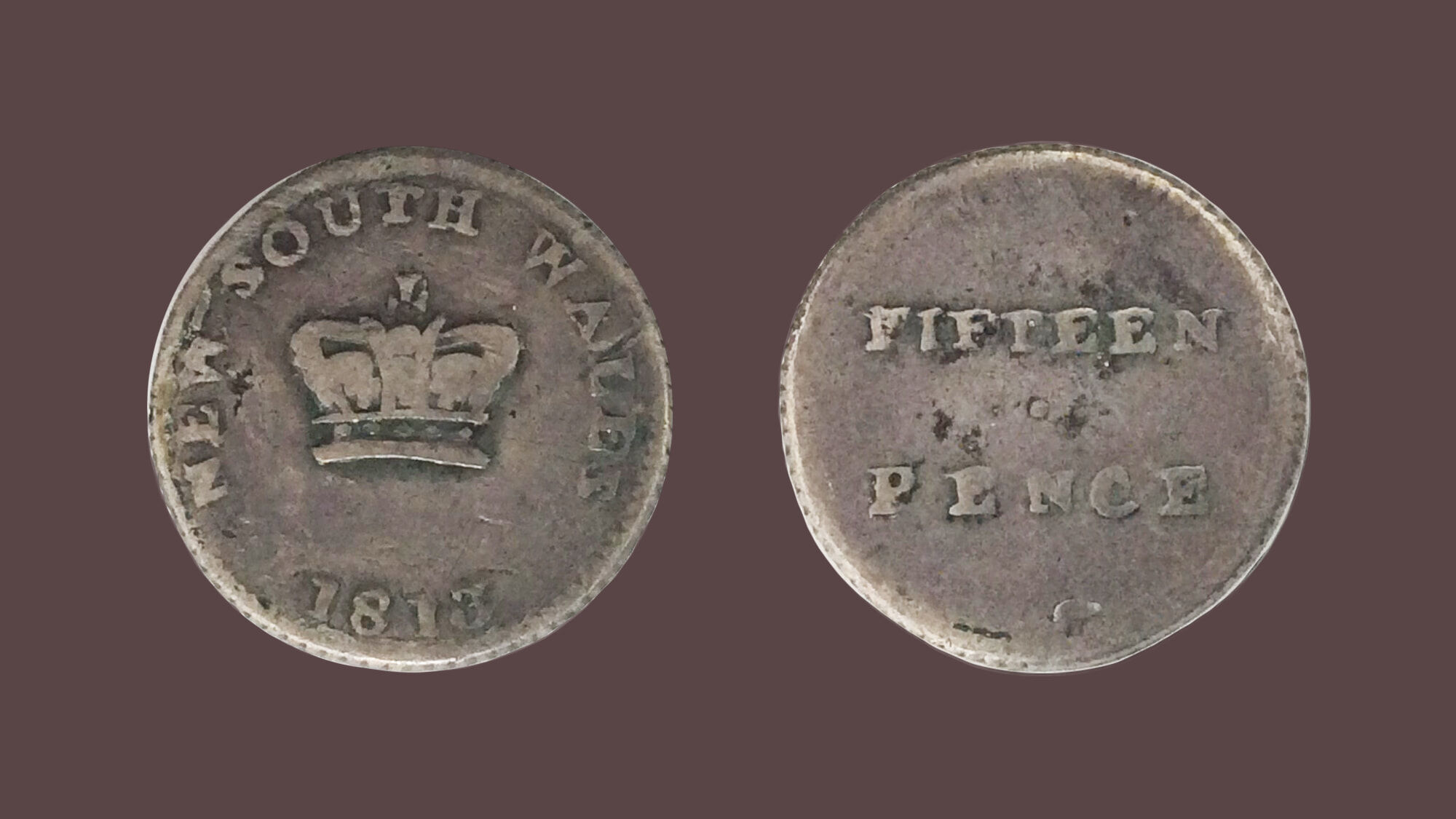
Shown here, an average well circulated 1813 Dump. A comparison to the coin on offer highlights the superior qualities of an 1813 Dump at Good Very Fine / About Extremely Fine.
Governor Lachlan Macquarie enlisted the services of emancipated convict, William Henshall, to cut a hole in 40,000 Spanish Silver Dollars, creating two coins out of one.
The Dump, the small disc that fell out of the centre of the holed silver dollar, was then over stamped with the date 1813, a crown, New South Wales and the value of fifteen pence.
The buyer that pursues a top-quality Dump will find the task extremely challenging. It can be years before a premium quality example comes onto the market.
The Dump circulated widely in the colony, the extreme wear on most Dumps evidence that they saw considerable use. So, while the Dump may seem the diminutive partner of the Holey Dollar, the reality is "top quality" Dumps have authority.
So let's define the words "top quality" and establish the levels that are rarely seen.
Every circulated coin has a grading level at which serious rarity kicks in. That is the point at which the balance between acquiring a coin as a collectible - and as an investment - shifts more towards the latter. For the 1813 Colonial Dump that point is Good Very Fine. (This coin.)
The chart below clearly shows that securing a Colonial Dump in a quality level of Good Very Fine or better is a difficult task. We would sight a Good Very Fine Dump on the open market perhaps once or twice every year.
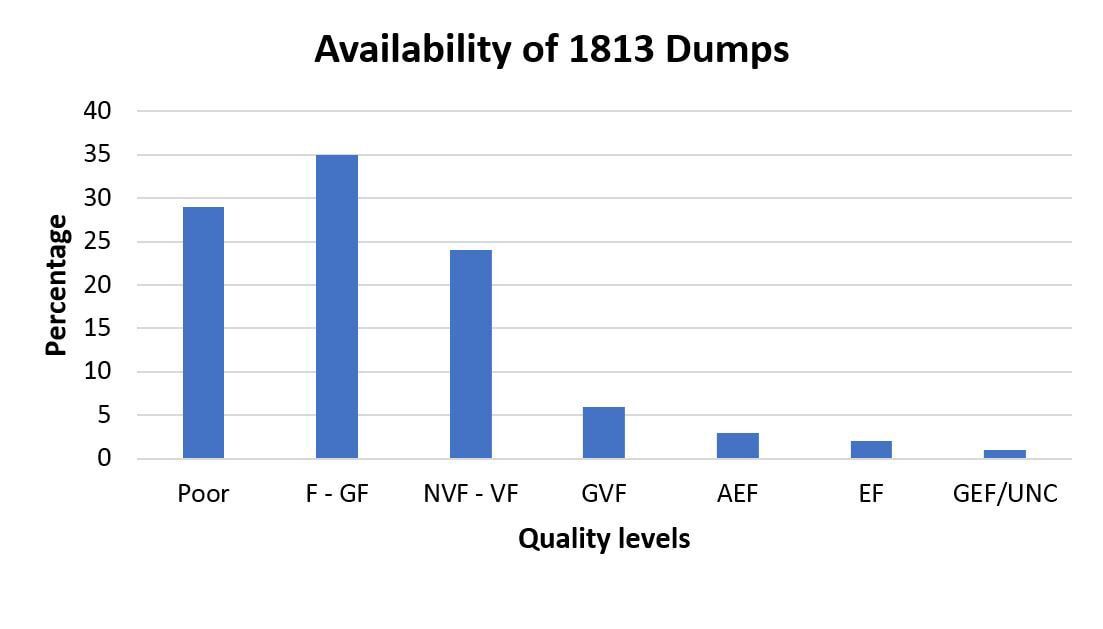
© Copyright: Coinworks
